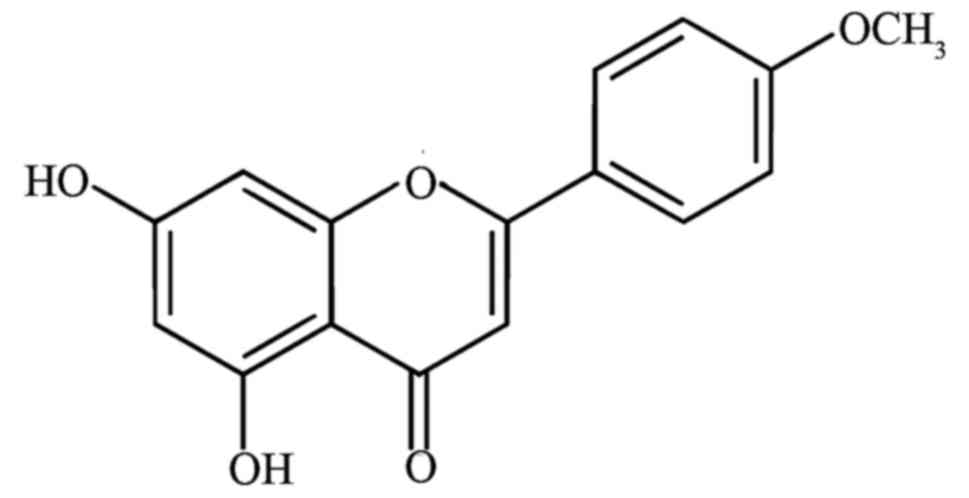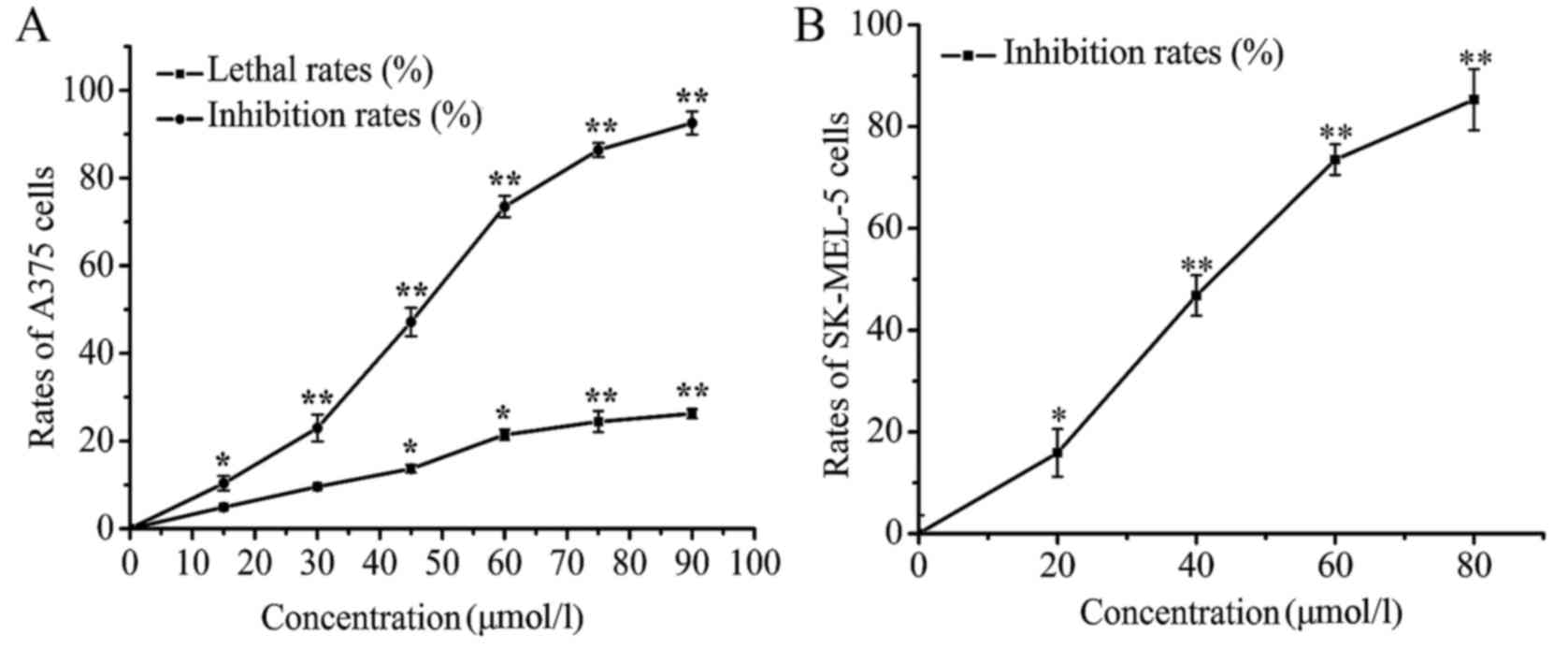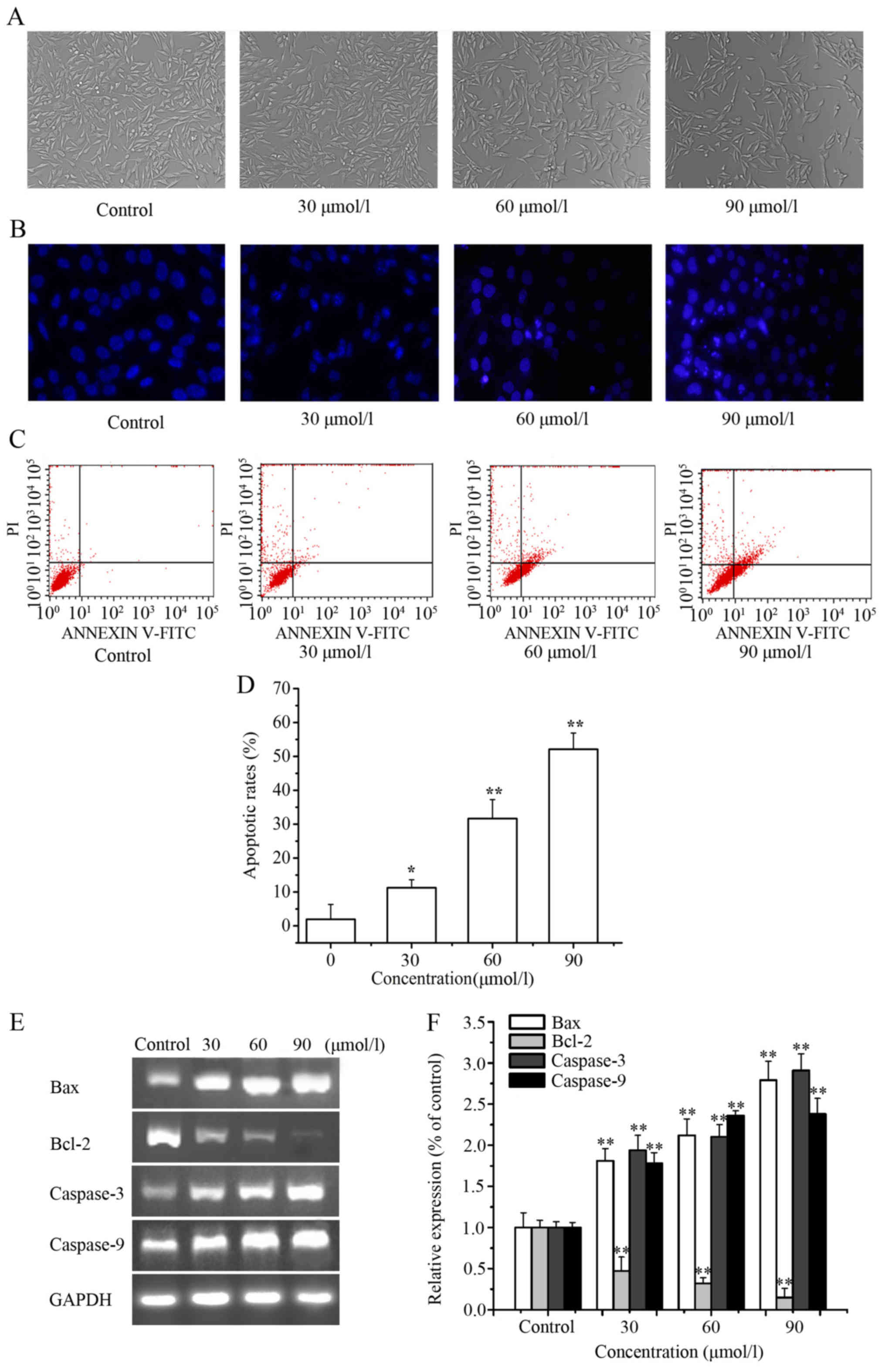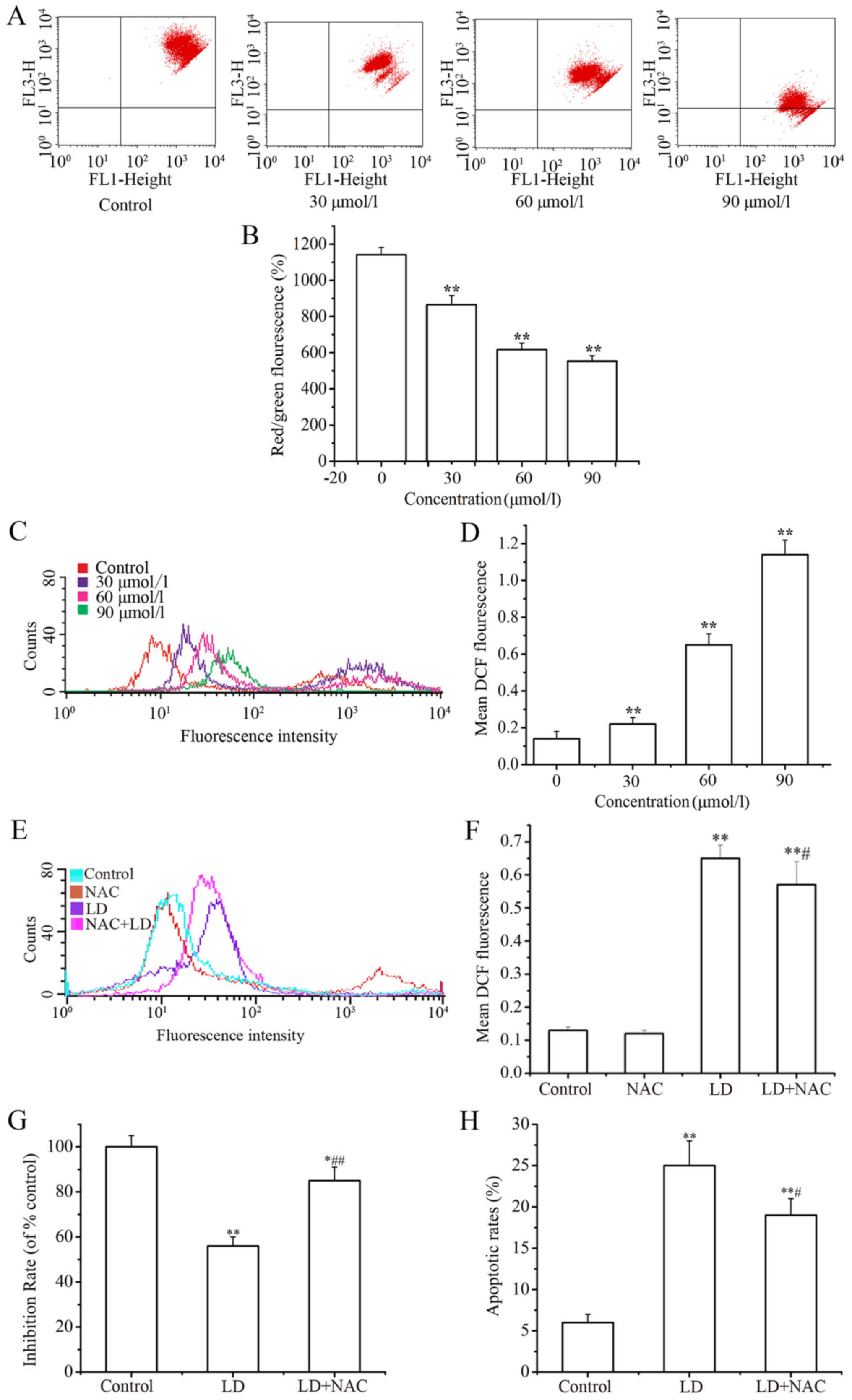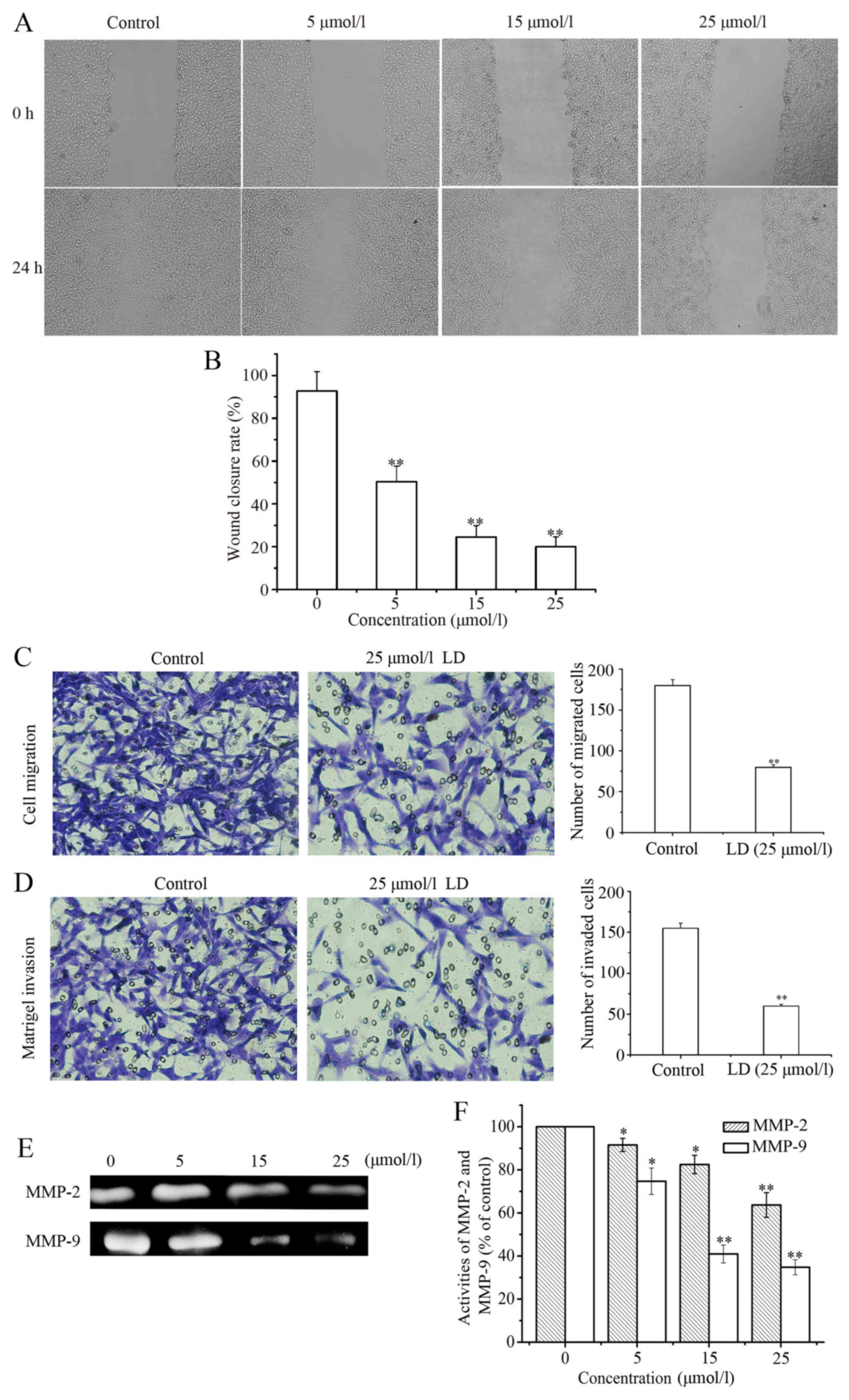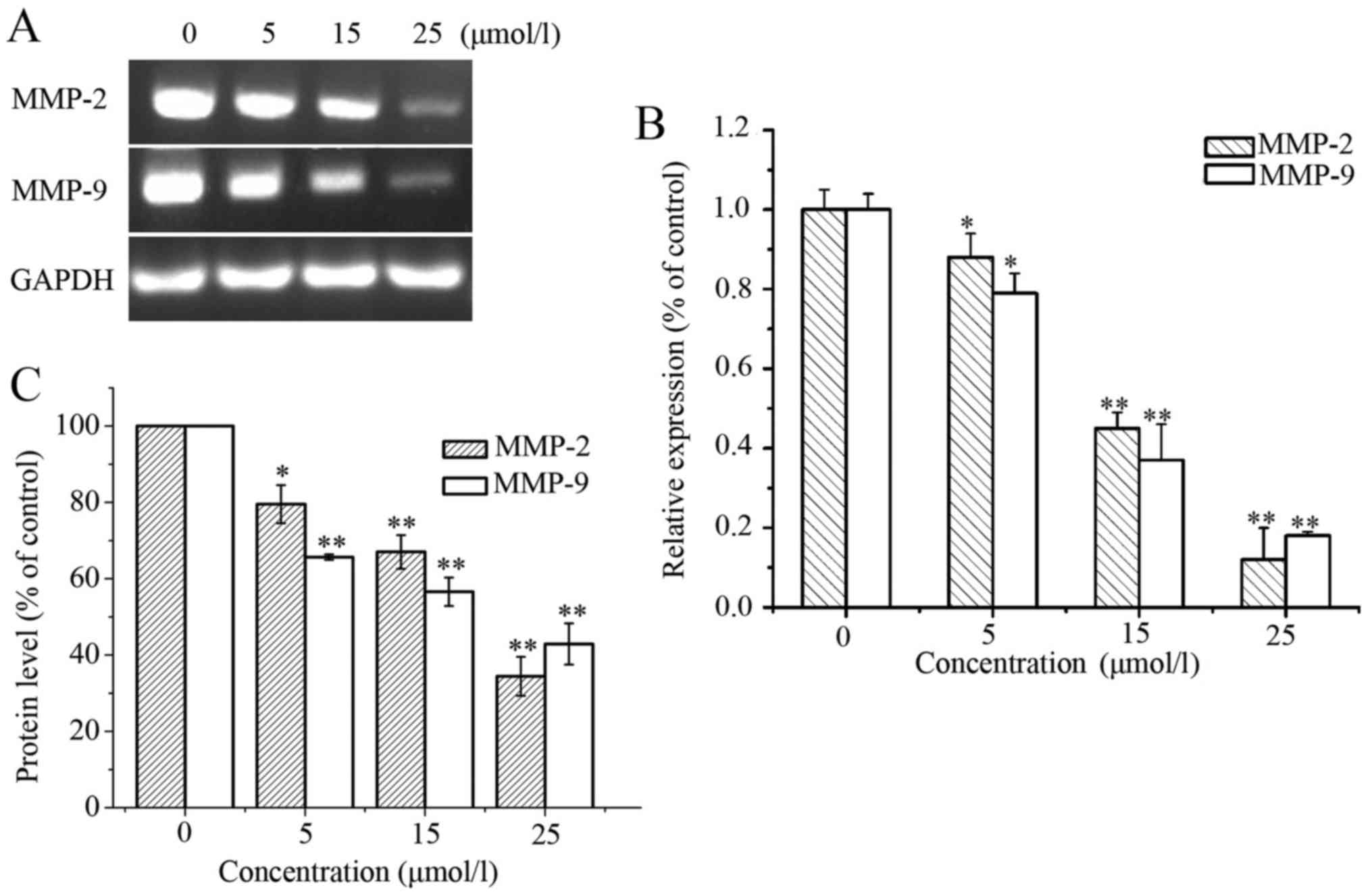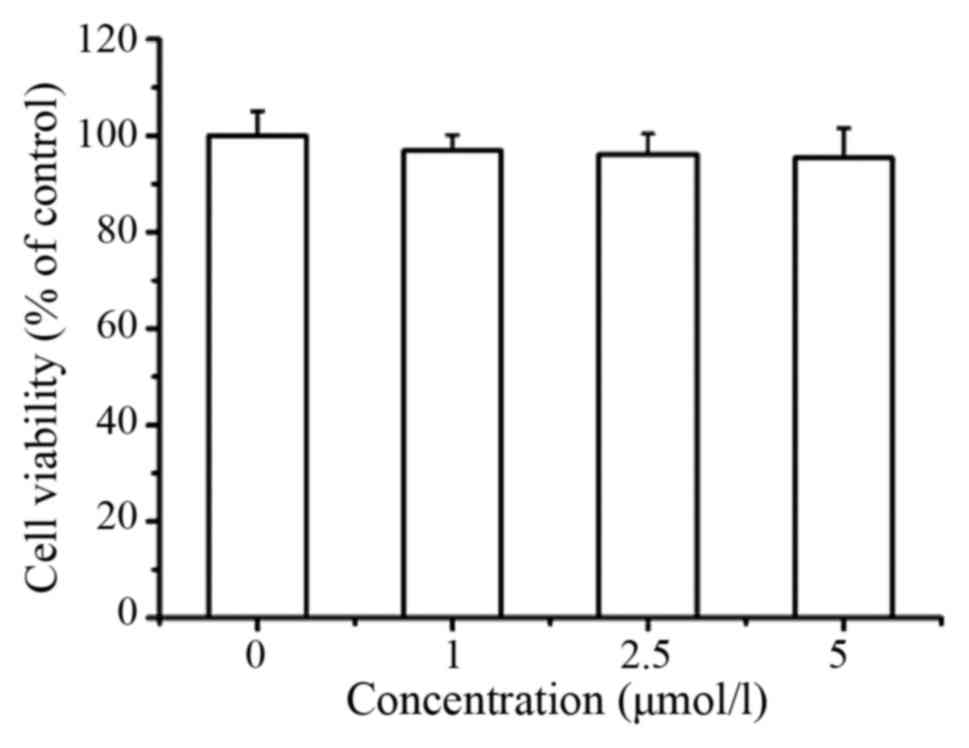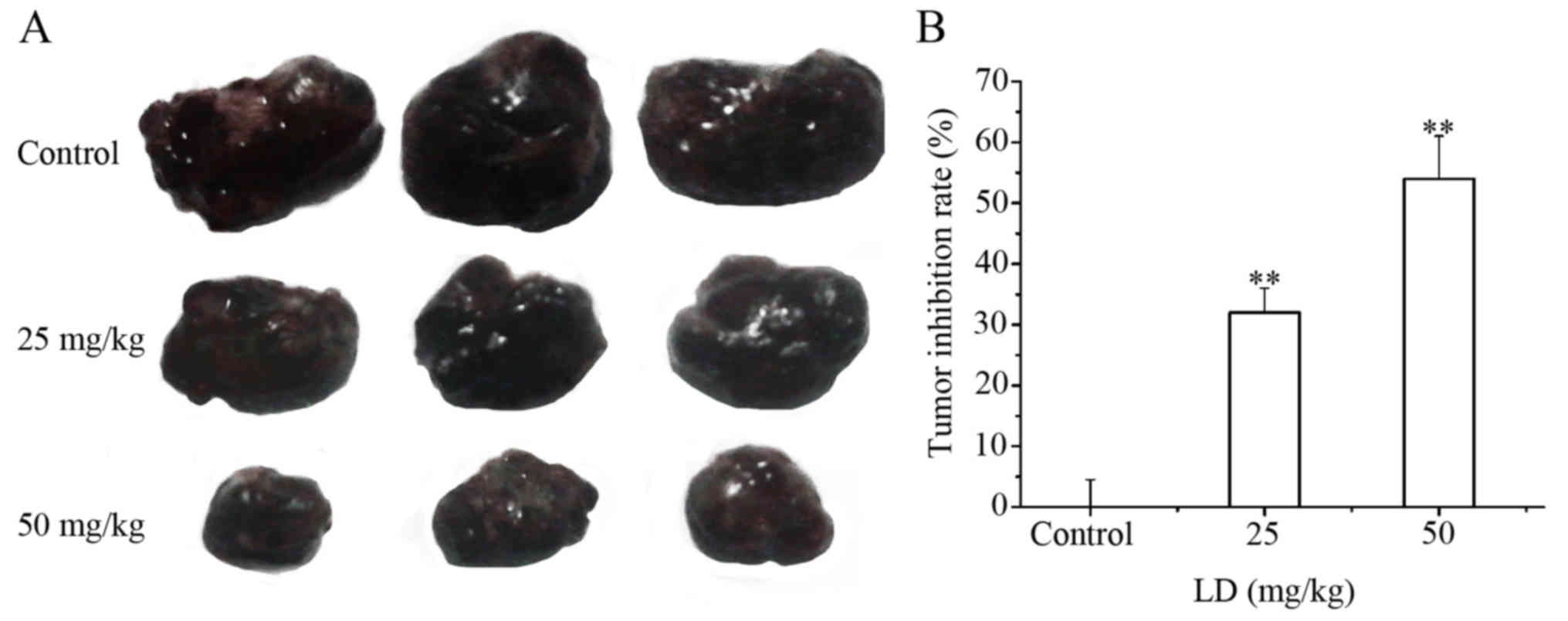|
1
|
Franklin C, Livingstone E, Roesch A,
Schilling B and Schadendorf D: Immunotherapy in melanoma: Recent
advances and future directions. Eur J Surg Oncol. 43:604–611. 2017.
View Article : Google Scholar : PubMed/NCBI
|
|
2
|
Reuland SN, Goldstein NB, Partyka KA,
Cooper DA, Fujita M, Norris DA and Shellman YG: The combination of
BH3-mimetic ABT-737 with the alkylating agent temozolomide induces
strong synergistic killing of melanoma cells independent of p53.
PLoS One. 6:e242942011. View Article : Google Scholar : PubMed/NCBI
|
|
3
|
Yuan H, Lu X, Ma Q, Li D, Xu G and Piao G:
Flavonoids from Artemisia sacrorum Ledeb. and their
cytotoxic activities against human cancer cell lines. Exp Ther Med.
12:1873–1878. 2016. View Article : Google Scholar : PubMed/NCBI
|
|
4
|
Wang P, Yuan X, Wang Y, Zhao H, Sun X and
Zheng Q: Licochalcone C induces apoptosis via B-cell lymphoma 2
family proteins in T24 cells. Mol Med Rep. 12:7623–7628. 2015.
View Article : Google Scholar : PubMed/NCBI
|
|
5
|
Yang X, Jiang J, Yang X, Han J and Zheng
Q: Licochalcone A induces T24 bladder cancer cell apoptosis by
increasing intracellular calcium levels. Mol Med Rep. 14:911–919.
2016. View Article : Google Scholar : PubMed/NCBI
|
|
6
|
Wang Y, Ma J, Yan X, Chen X, Si L, Liu Y,
Han J, Hao W and Zheng Q: Isoliquiritigenin inhibits proliferation
and induces apoptosis via alleviating hypoxia and reducing
glycolysis in melanoma B16F10 cells. Recent Pat Anticancer Drug
Discov. 11:215–227. 2016. View Article : Google Scholar : PubMed/NCBI
|
|
7
|
Yu L, Ma J, Han J, Wang B, Chen X, Gao C,
Li D and Zheng Q: Licochalcone B arrests cell cycle progression and
induces apoptosis in human breast cancer MCF-7 cells. Recent Pat
Anticancer Drug Discov. 11:444–452. 2016. View Article : Google Scholar : PubMed/NCBI
|
|
8
|
Haraguchi H, Ishikawa H, Mizutani K,
Tamura Y and Kinoshita T: Antioxidative and superoxide scavenging
activities of retrochalcones in Glycyrrhiza inflata. Bioorg
Med Chem. 6:339–347. 1998. View Article : Google Scholar : PubMed/NCBI
|
|
9
|
Hong GP, Bak EJ, Woo GH, Kim JM, Quan Z,
Kim JM, Yoon HK, Cheon SH, Yoon G, Yoo YJ, et al: Licochalcone E
has an antidiabetic effect. J Nutr Biochem. 23:759–767. 2012.
View Article : Google Scholar : PubMed/NCBI
|
|
10
|
Kim SJ, Kim CG, Yun SR, Kim JK and Jun JG:
Synthesis of licochalcone analogues with increased
anti-inflammatory activity. Bioorg Med Chem Lett. 24:181–185. 2014.
View Article : Google Scholar : PubMed/NCBI
|
|
11
|
Esmaeli A, Moshrefi M, Shamsara A,
Eftekhar-Vaghefi SH and Nematollahi-Mahani SN: Xeno-free culture
condition for human bone marrow and umbilical cord matrix-derived
mesenchymal stem/stromal cells using human umbilical cord blood
serum. Int J Reprod Biomed. 14:567–576. 2016. View Article : Google Scholar
|
|
12
|
Hung CM, Lin YC, Liu LC, Kuo SC, Ho CT and
Way TD: CWF-145, a novel synthetic quinolone derivative exerts
potent antimitotic activity against human prostate cancer:
Rapamycin enhances antimitotic drug-induced apoptosis through the
inhibition of Akt/mTOR pathway. Chem Biol Interact. 260:1–12. 2016.
View Article : Google Scholar : PubMed/NCBI
|
|
13
|
Magro AM, Magro AD, Cunningham C and
Miller MR: Down-regulation of vinculin upon MK886-induced apoptosis
in LN18 glioblastoma cells. Neoplasma. 54:517–526. 2007.PubMed/NCBI
|
|
14
|
Fu Q, Dai S, Zhou Y, Zheng H, Xiang H,
Tian X, Gao F, Manyande A, Cao F, Tian Y and Ye D: MHC-I promotes
apoptosis of GABAergic interneurons in the spinal dorsal horn and
contributes to cancer induced bone pain. Exp Neurol. 286:12–20.
2016. View Article : Google Scholar : PubMed/NCBI
|
|
15
|
Chang HT, Chou CT, Chen IS, Yu CC, Lu T,
Hsu SS, Shieh P, Jan CR and Liang WZ: Mechanisms underlying effect
of the mycotoxin cytochalasin B on induction of cytotoxcity,
modulation of cell cycle, Ca2+ homeostasis and ROS
production in human breast cells. Toxicology. 370:1–19. 2016.
View Article : Google Scholar : PubMed/NCBI
|
|
16
|
Zhou Y, Lin S, Tseng KF, Han K, Wang Y,
Gan ZH, Min DL and Hu HY: Selumetinib suppresses cell
proliferation, migration and trigger apoptosis, G1 arrest in
triple-negative breast cancer cells. BMC Cancer. 16:8182016.
View Article : Google Scholar : PubMed/NCBI
|
|
17
|
Yun J, Kim BG, Kang JS, Park SK, Lee K,
Hyun DH, Kim HM, In MJ and Kim DC: Lipid-soluble ginseng extract
inhibits invasion and metastasis of B16F10 melanoma cells. J Med
Food. 18:102–108. 2015. View Article : Google Scholar : PubMed/NCBI
|
|
18
|
Malumbres M and Barbacid M: Cell cycle,
CDKs and cancer: A changing paradigm. Nat Rev Cancer. 9:153–166.
2009. View
Article : Google Scholar : PubMed/NCBI
|
|
19
|
Hunter AM, LaCasse EC and Korneluk RG: The
inhibitors of apoptosis (IAPs) as cancer targets. Apoptosis.
12:1543–1568. 2007. View Article : Google Scholar : PubMed/NCBI
|
|
20
|
Slee EA, Adrain C and Martin SJ:
Executioner caspase-3, −6, and −7 perform distinct, non-redundant
roles during the demolition phase of apoptosis. J Biol Chem.
276:7320–7326. 2001. View Article : Google Scholar : PubMed/NCBI
|
|
21
|
Autret A and Martin SJ: Emerging role for
members of the Bcl-2 family in mitochondrial morphogenesis. Mol
Cell. 36:355–363. 2009. View Article : Google Scholar : PubMed/NCBI
|
|
22
|
Apel K and Hirt H: Reactive oxygen
species: Metabolism, oxidative stress, and signal transduction.
Annu Rev Plant Biol. 55:373–399. 2004. View Article : Google Scholar : PubMed/NCBI
|
|
23
|
Li L, Cao W, Zheng W, Fan C and Chen T:
Ruthenium complexes containing 2,6-bis(benzimidazolyl)pyridine
derivatives induce cancer cell apoptosis by triggering DNA
damage-mediated p53 phosphorylation. Dalton Trans. 41:12766–12772.
2012. View Article : Google Scholar : PubMed/NCBI
|
|
24
|
Halliwell B: Oxidative stress and cancer:
Have we moved forward? Biochem J. 401:1–11. 2007. View Article : Google Scholar : PubMed/NCBI
|
|
25
|
Wu X and Hua X: Targeting ROS: Selective
killing of cancer cells by a cruciferous vegetable derived
pro-oxidant compound. Cancer Biol Ther. 6:646–647. 2007. View Article : Google Scholar : PubMed/NCBI
|
|
26
|
Fidler IJ: The pathogenesis of cancer
metastasis: The ‘seed and soil’ hypothesis revisited. Nat Rev
Cancer. 3:453–458. 2003. View Article : Google Scholar : PubMed/NCBI
|
|
27
|
Nguyen DX and Massagué J: Genetic
determinants of cancer metastasis. Nat Rev Genet. 8:341–352. 2007.
View Article : Google Scholar : PubMed/NCBI
|
|
28
|
Fietz S, Einspanier R, Hoppner S, Hertsch
B and Bondzio A: Determination of MMP-2 and −9 activities in
synovial fluid of horses with osteoarthritic and arthritic joint
diseases using gelatin zymography and immunocapture activity
assays. Equine Vet J. 40:266–271. 2008. View Article : Google Scholar : PubMed/NCBI
|
|
29
|
Liu J, Ping W, Zu Y and Sun W:
Correlations of lysyl oxidase with MMP2/MMP9 expression and its
prognostic value in non-small cell lung cancer. Int J Clin Exp
Pathol. 7:6040–6047. 2014.PubMed/NCBI
|
|
30
|
Jacob A and Prekeris R: The regulation of
MMP targeting to invadopodia during cancer metastasis. Front Cell
Dev Biol. 3:42015. View Article : Google Scholar : PubMed/NCBI
|



